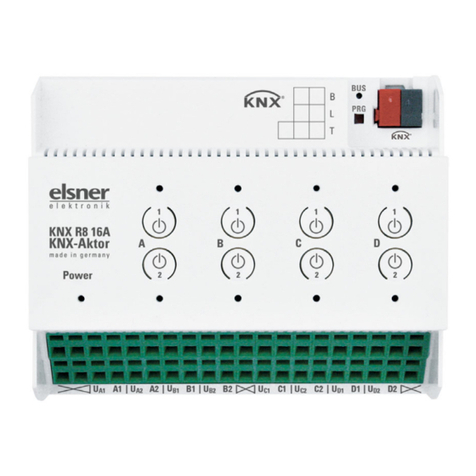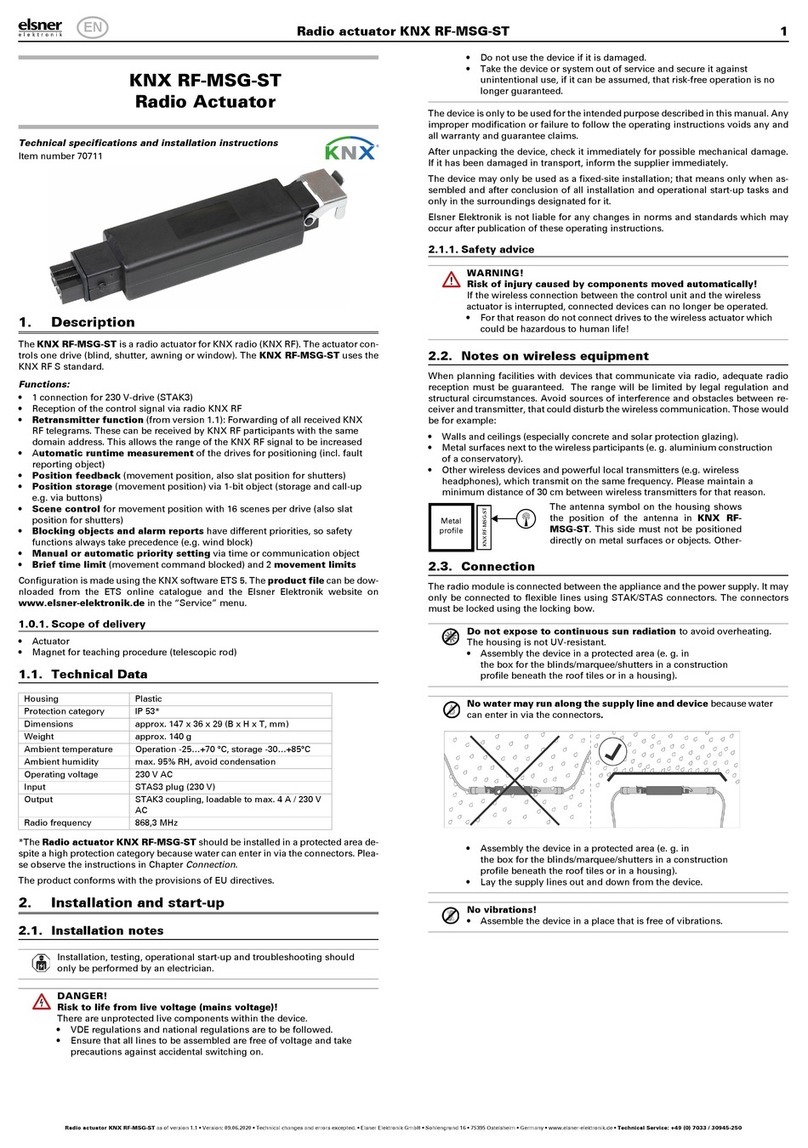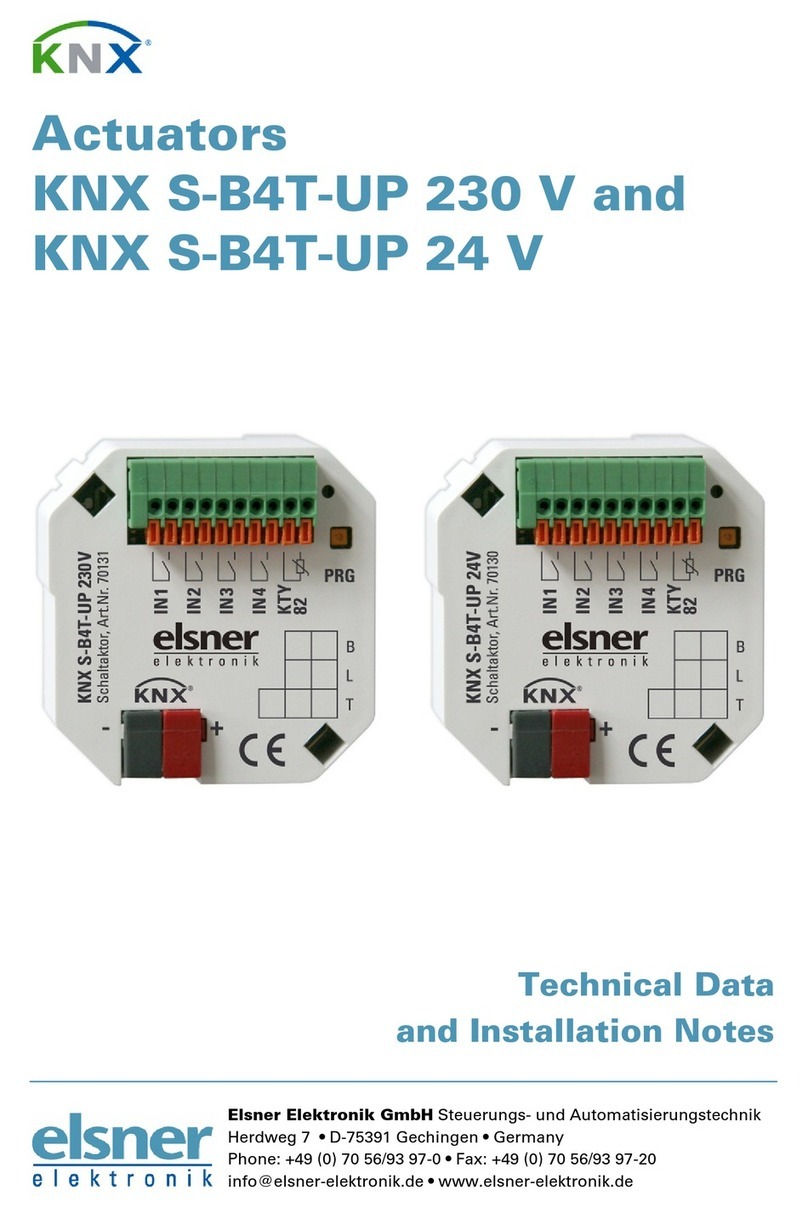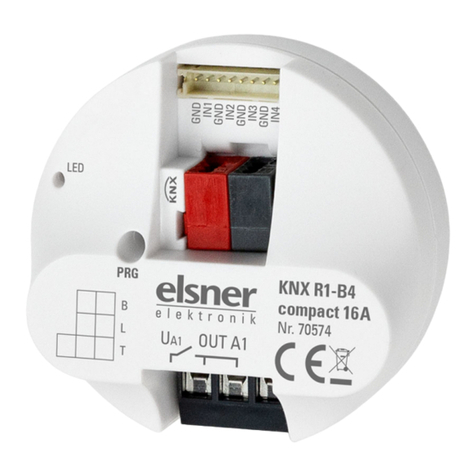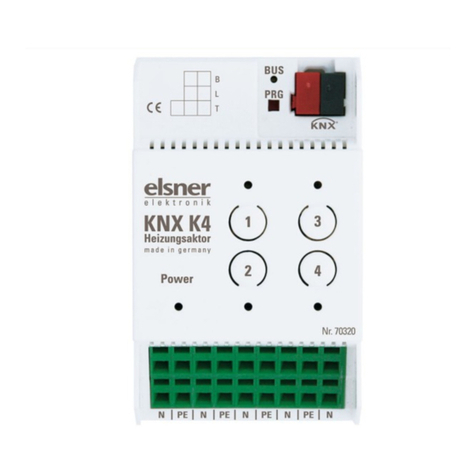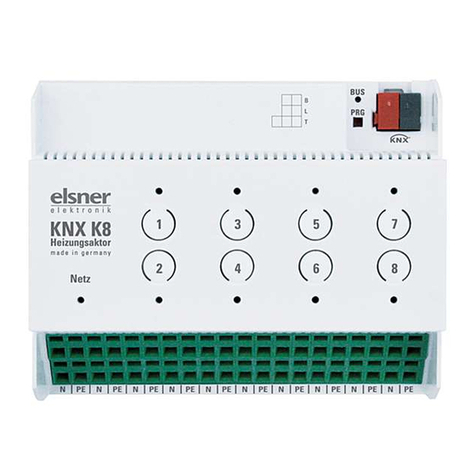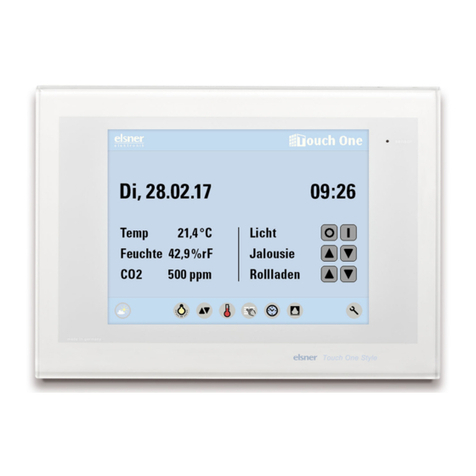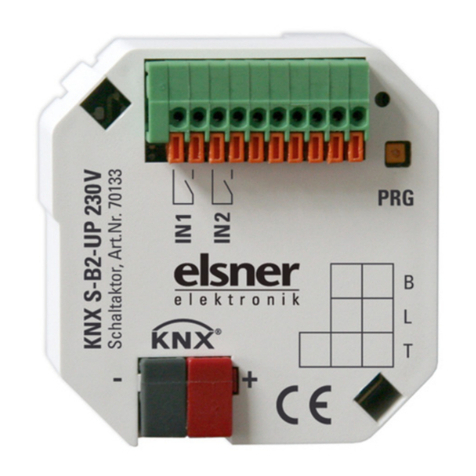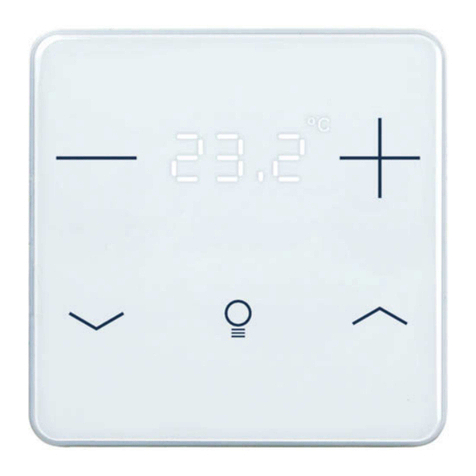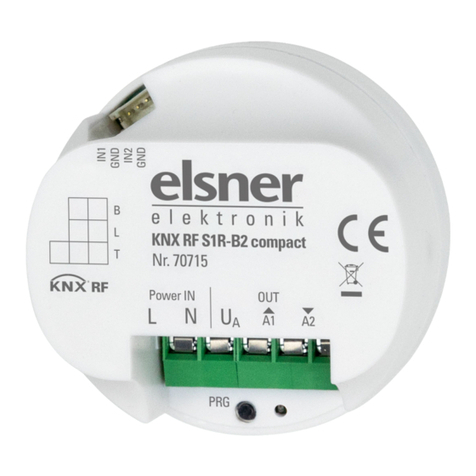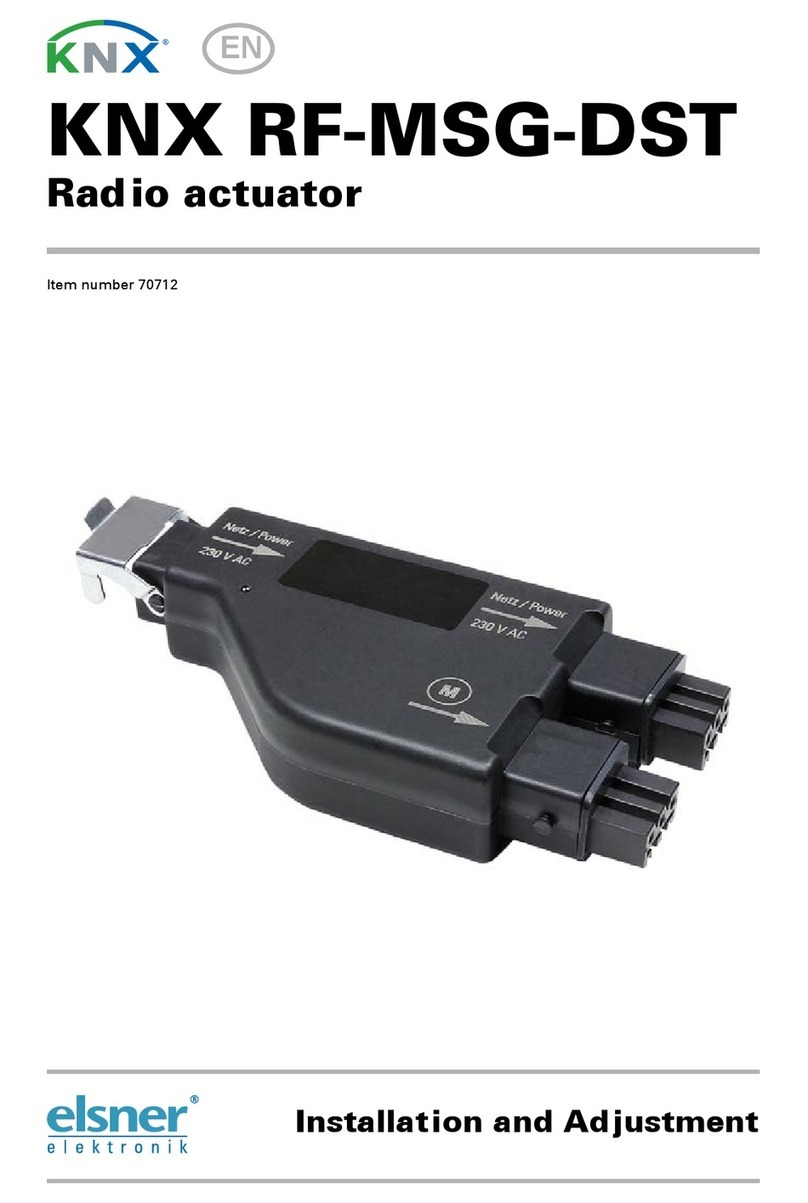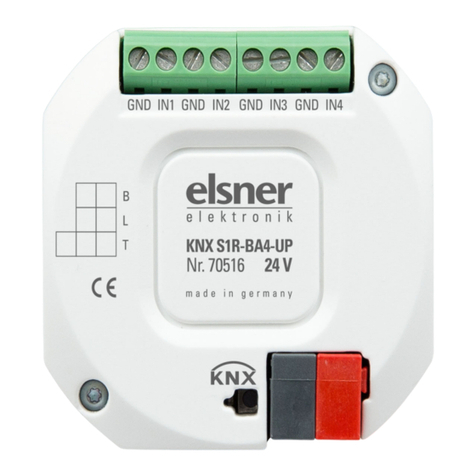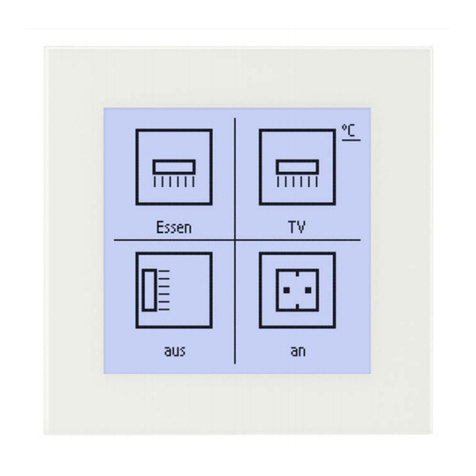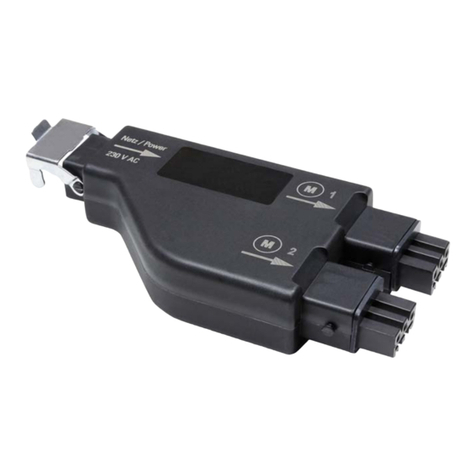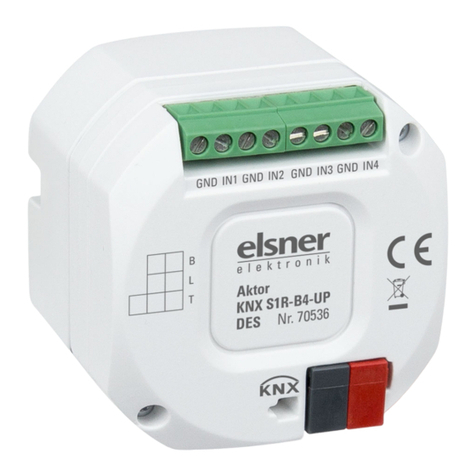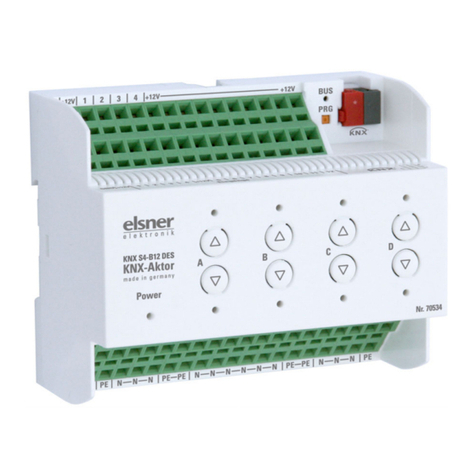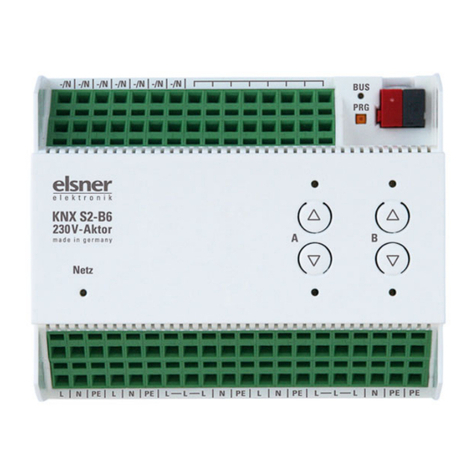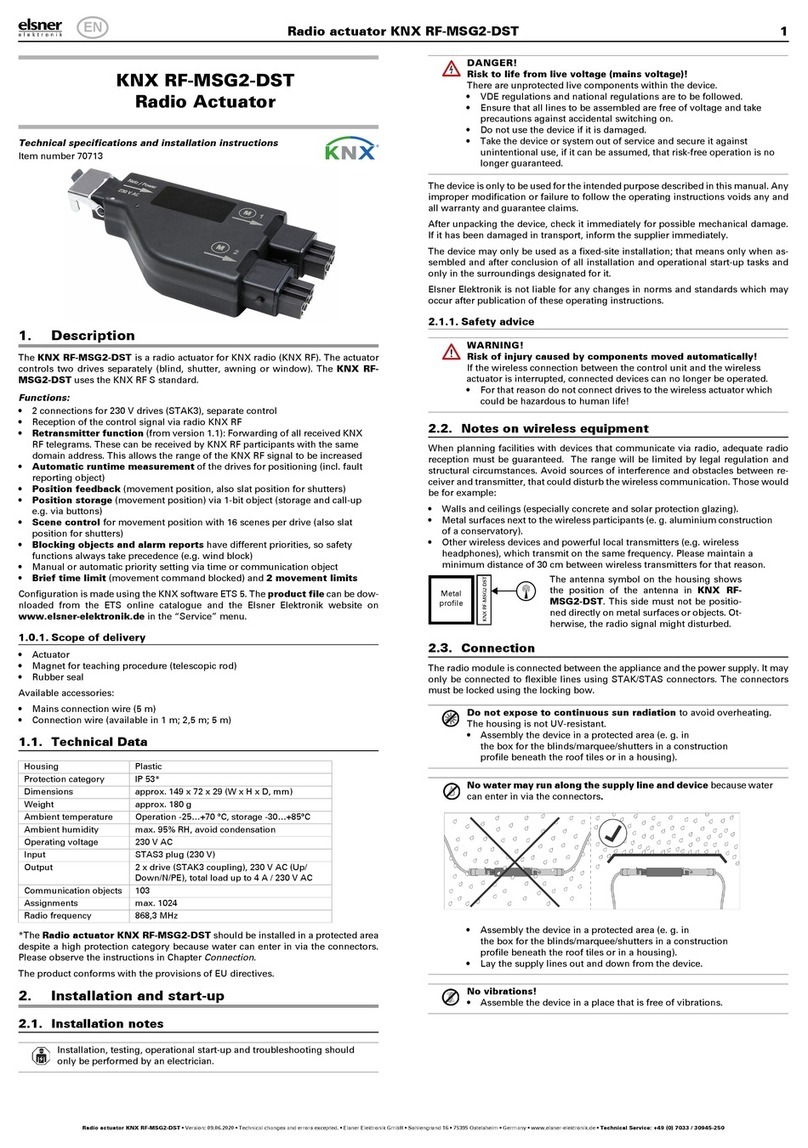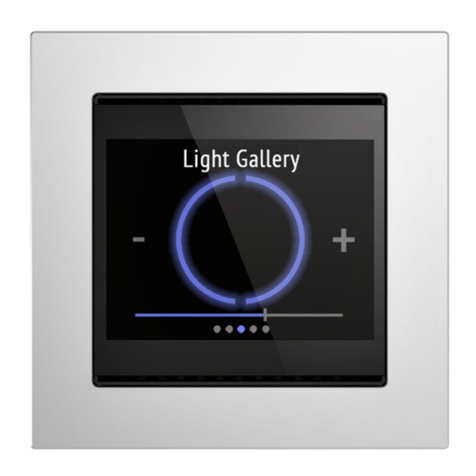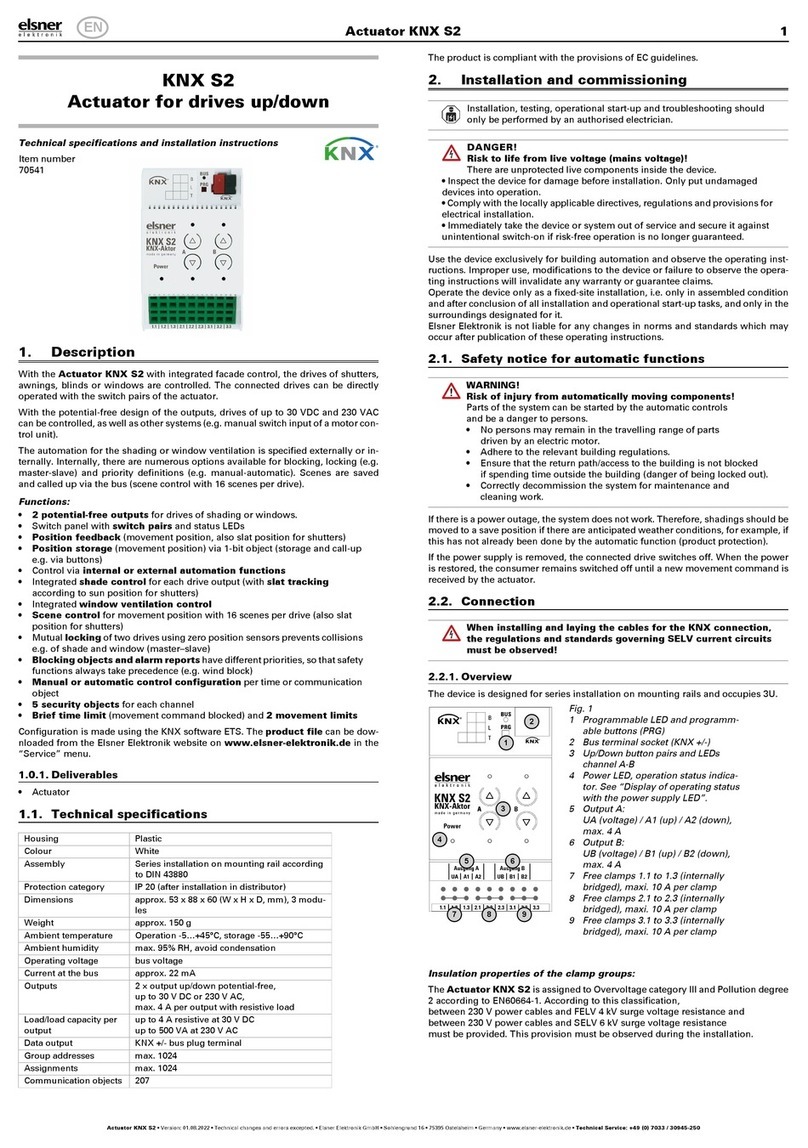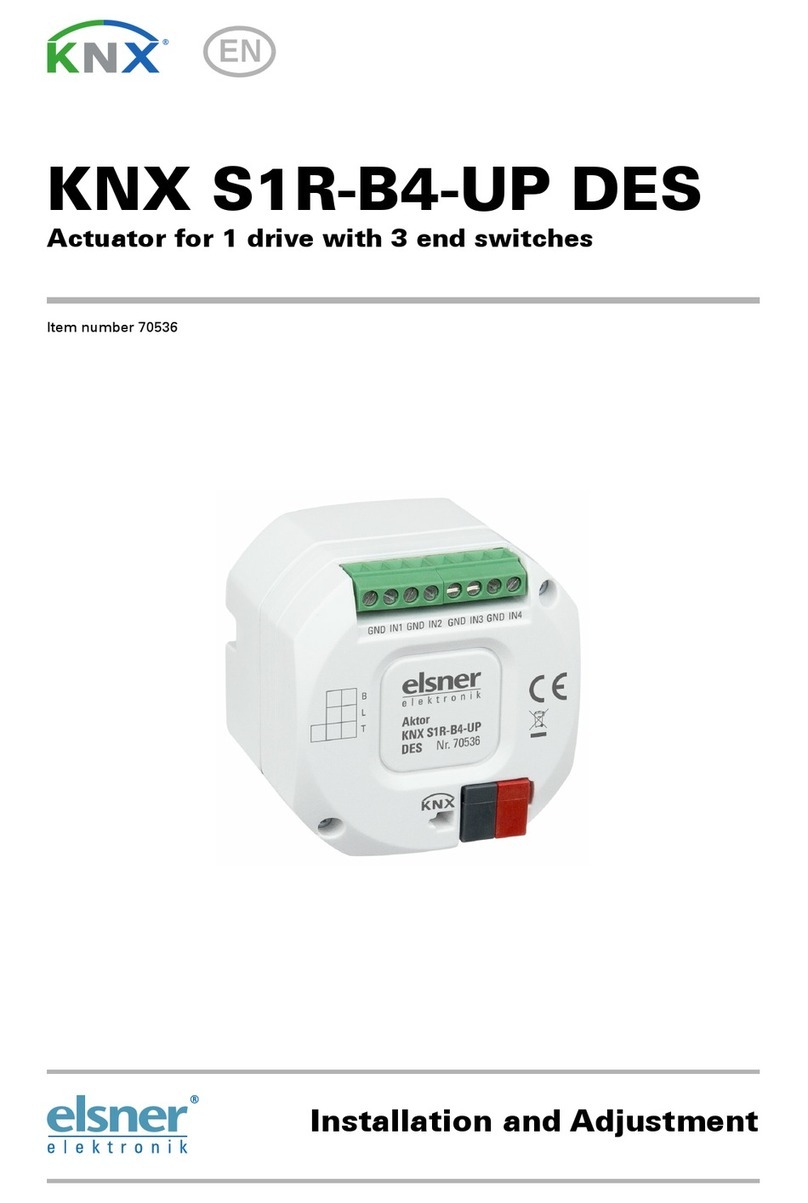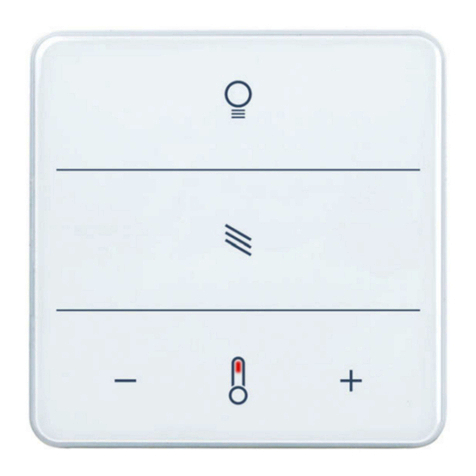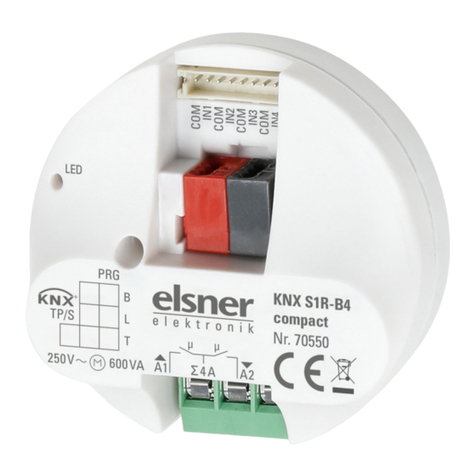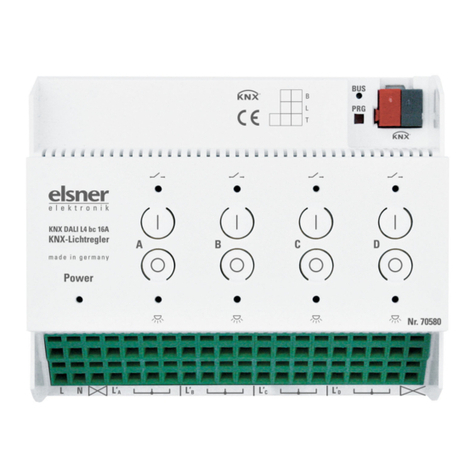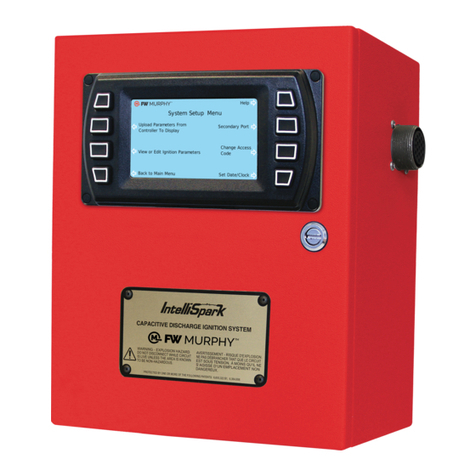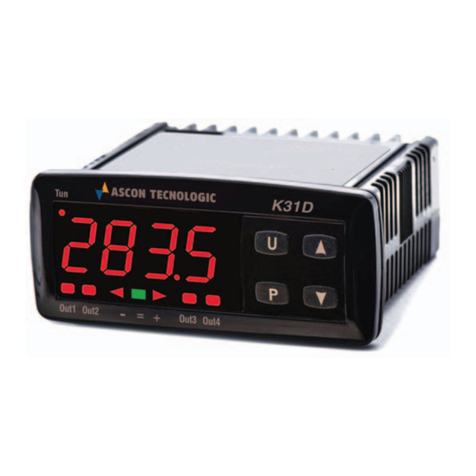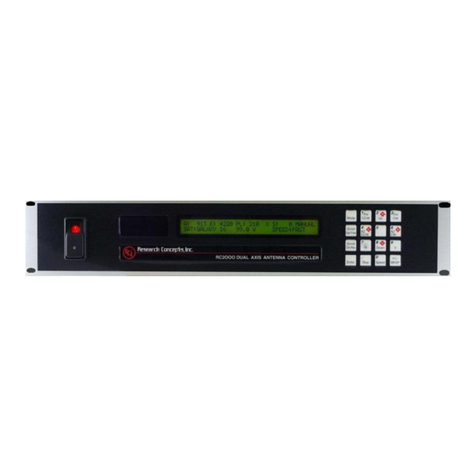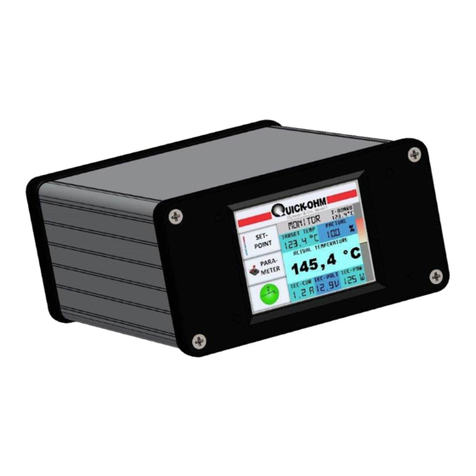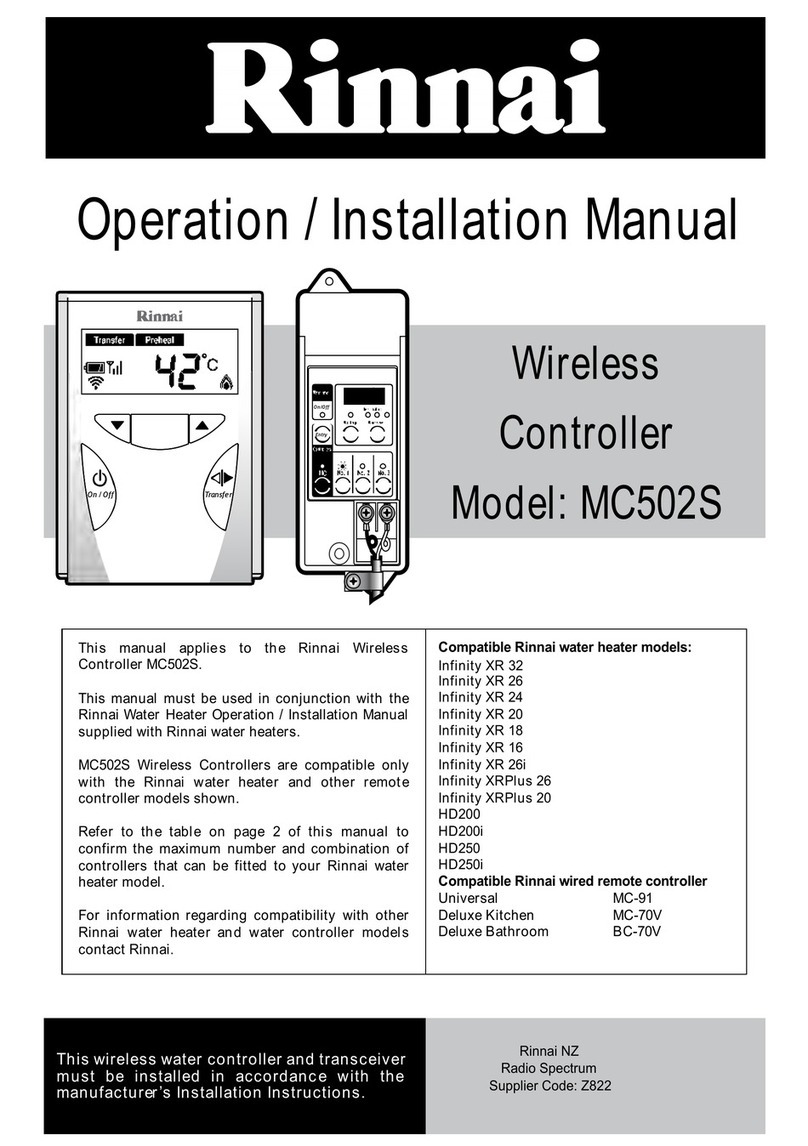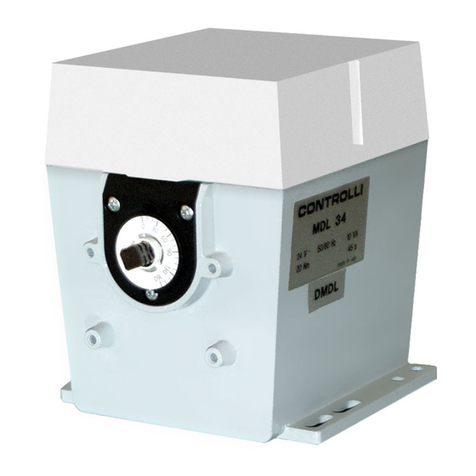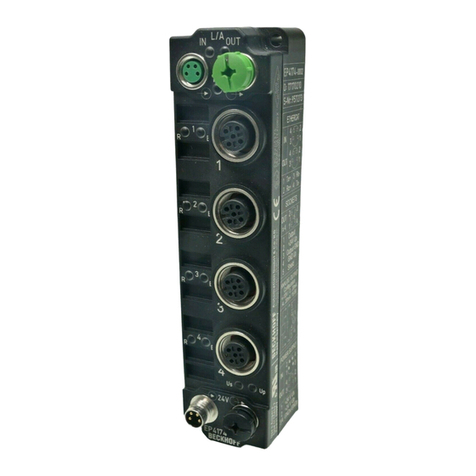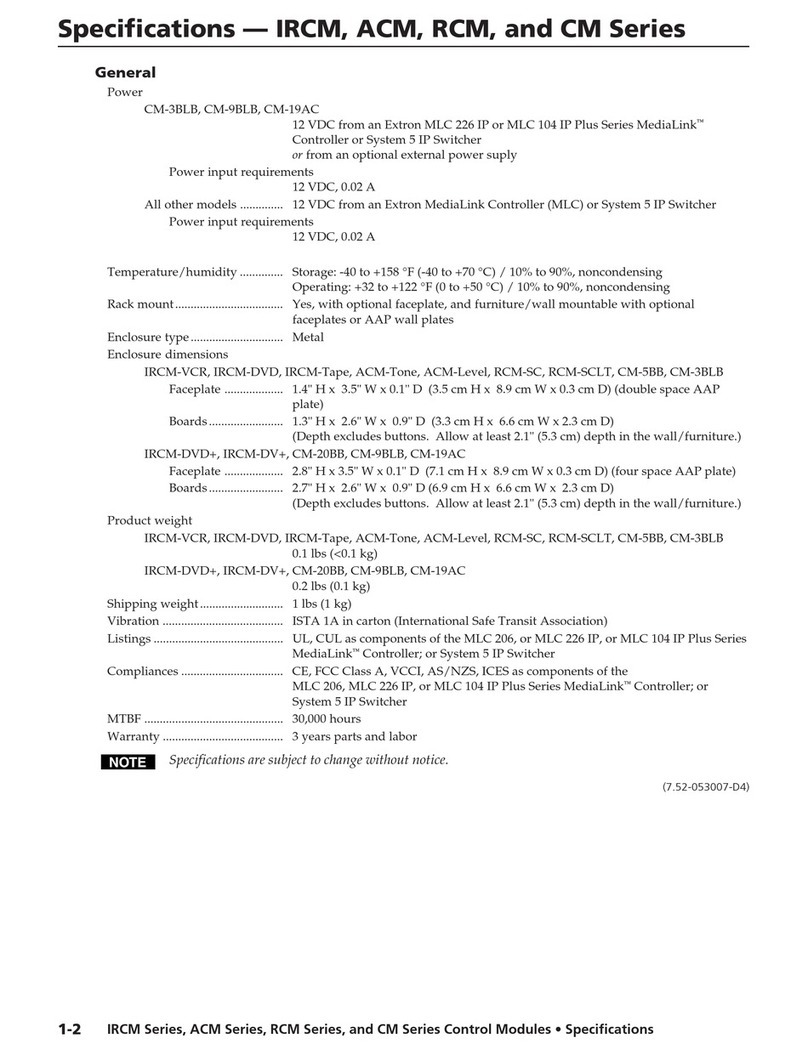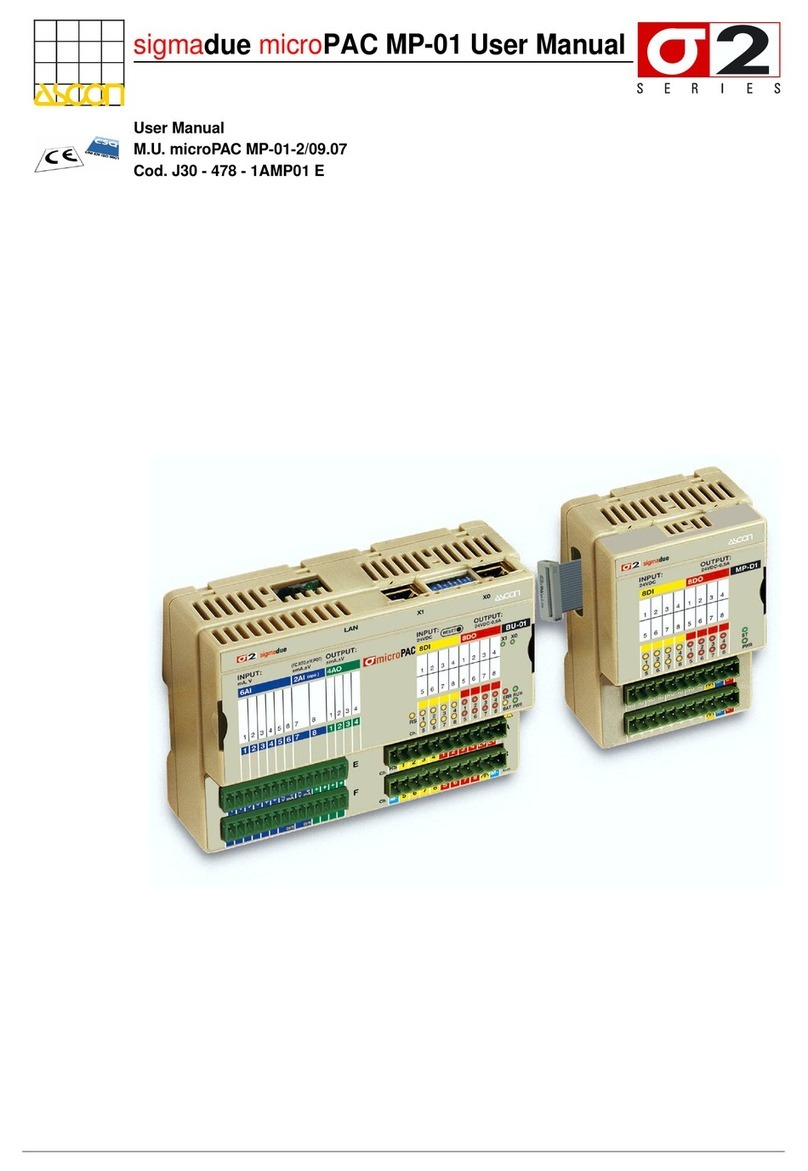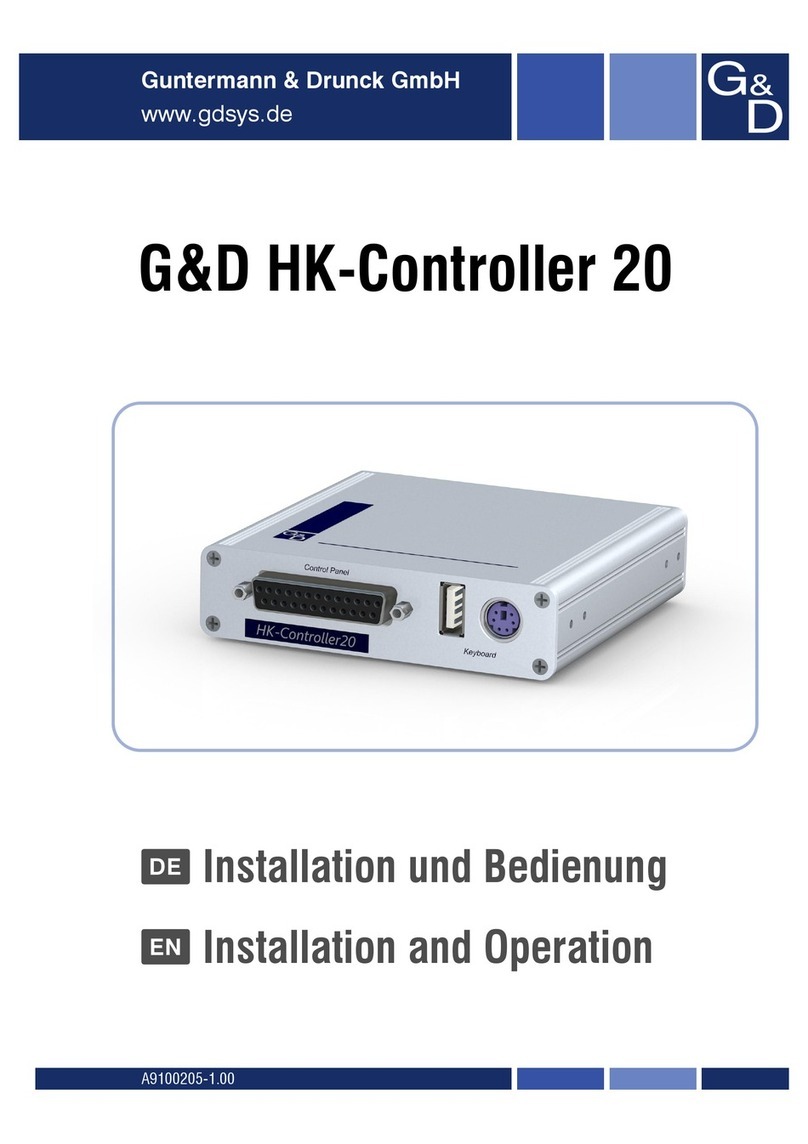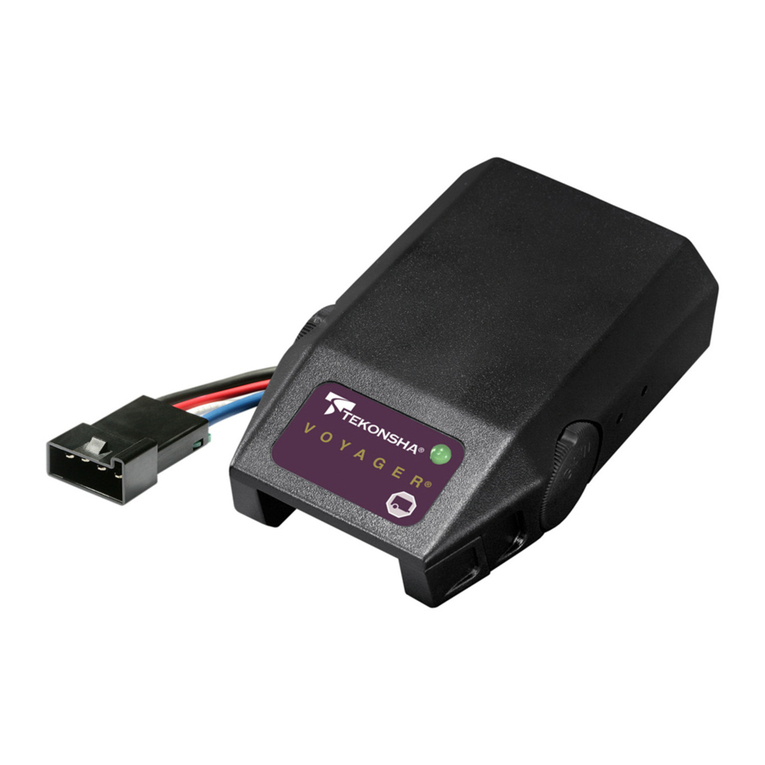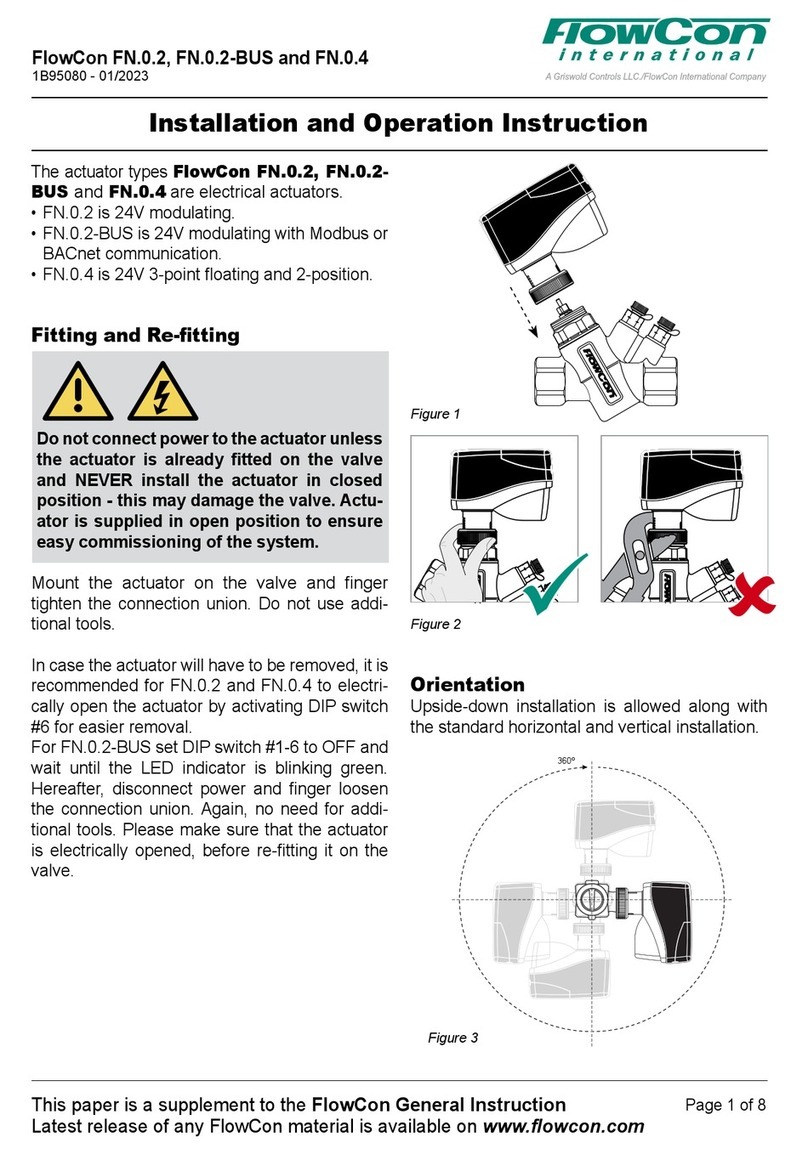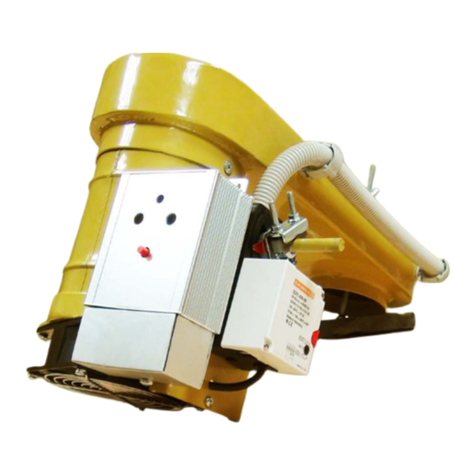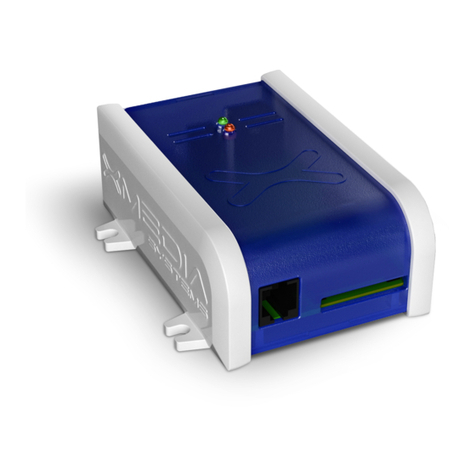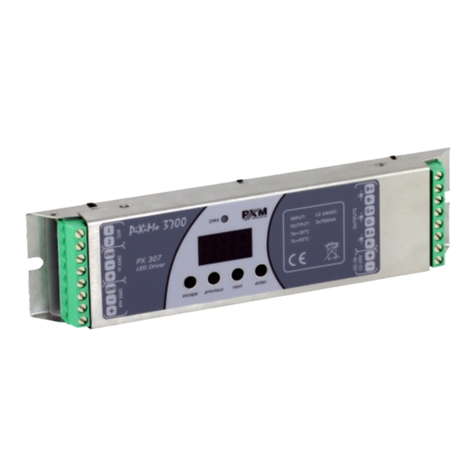
Radio actuator KNX RF-MSG-ST 1
Radio actuator KNX RF-MSG-ST as of version 1.1 • Version: 19.12.2022 • Technical changes and errors excepted. • Elsner Elektronik GmbH • Sohlengrund 16 • 75395 Ostelsheim • Germany • www.elsner-elektronik.de • Technical Service: +49 (0) 7033 / 30945-250
EN
KNX RF-MSG-ST
Radio Actuator
Technical specifications and installation instructions
Item number 70711
1. Description
The KNX RF-MSG-ST is a radio actuator for KNX radio (KNX RF). The actuator con-
trols one drive (blind, shutter, awning or window). The KNX RF-MSG-ST uses the
KNX RF S standard.
Functions:
• 1 connection for 230 V-drive (STAK3)
• Reception of the control signal via radio KNX RF
•Retransmitter function (from version 1.1): Forwarding of all received KNX
RF telegrams. These can be received by KNX RF participants with the same
domain address. This allows the range of the KNX RF signal to be increased
•Automatic runtime measurement of the drives for positioning (incl. fault
reporting object)
•Position feedback (movement position, also slat position for shutters)
•Position storage (movement position) via 1-bit object (storage and call-up
e.g. via buttons)
•Scene control for movement position with 16 scenes per drive (also slat
position for shutters)
•Blocking objects and alarm reports have different priorities, so safety
functions always take precedence (e.g. wind block)
•Manual or automatic priority setting via time or communication object
•Brief time limit (movement command blocked) and 2 movement limits
Configuration is made using the KNX software as of ETS 5. The product file can be
downloaded from the ETS online catalogue and the Elsner Elektronik website on
www.elsner-elektronik.de in the “Service” menu.
1.0.1. Scope of delivery
•Actuator
• Magnet for teaching procedure (telescopic rod)
1.1. Technical Data
*The Radio actuator KNX RF-MSG-ST should be installed in a protected area de-
spite a high protection category because water can enter in via the connectors. Plea-
se observe the instructions in Chapter Connection.
The product conforms with the provisions of EU directives.
2. Installation and start-up
Installation, testing, operational start-up and troubleshooting should
only be performed by an authorised electrician.
DANGER!
Risk to life from live voltage (mains voltage)!
There are unprotected live components inside the device.
• Inspect the device for damage before installation. Only put undamaged
devices into operation.
• Comply with the locally applicable directives, regulations and provisions for
electrical installation.
• Immediately take the device or system out of service and secure it against
unintentional switch-on if risk-free operation is no longer guaranteed.
Use the device exclusively for building automation and observe the operating inst-
ructions. Improper use, modifications to the device or failure to observe the opera-
ting instructions will invalidate any warranty or guarantee claims.
Operate the device only as a fixed-site installation, i.e. only in assembled condition
and after conclusion of all installation and operational start-up tasks, and only in the
surroundings designated for it.
Elsner Elektronik is not liable for any changes in norms and standards which may
occur after publication of these operating instructions.
2.0.1. Safety advice
WARNING!
Risk of injury caused by components moved automatically!
If the wireless connection between the control unit and the wireless
actuator is interrupted, connected devices can no longer be operated.
• For that reason do not connect drives to the wireless actuator which
could be hazardous to human life!
2.1. Notes on wireless equipment
When planning facilities with devices that communicate via radio, adequate radio
reception must be guaranteed. The range will be limited by legal regulation and
structural circumstances. Avoid sources of interference and obstacles between re-
ceiver and transmitter, that could disturb the wireless communication. Those would
be for example:
• Walls and ceilings (especially concrete and solar protection glazing).
• Metal surfaces next to the wireless participants (e. g. aluminium construction
of a conservatory).
• Other wireless devices and powerful local transmitters (e.g. wireless
headphones), which transmit on the same frequency. Please maintain a
minimum distance of 30 cm between wireless transmitters for that reason.
2.2. Connection
The radio module is connected between the appliance and the power supply. It may
only be connected to flexible lines using STAK/STAS connectors. The connectors
must be locked using the locking bow.
Do not expose to continuous sun radiation to avoid overheating.
The housing is not UV-resistant.
• Assembly the device in a protected area (e. g. in
the box for the blinds/marquee/shutters in a construction
profile beneath the roof tiles or in a housing).
No water may run along the supply line and device because water
can enter in via the connectors.
• Assembly the device in a protected area (e. g. in
the box for the blinds/marquee/shutters in a construction
profile beneath the roof tiles or in a housing).
• Lay the supply lines out and down from the device.
No vibrations!
• Assemble the device in a place that is free of vibrations.
Housing Plastic
Protection category IP 53*
Dimensions approx. 147 x 36 x 29 (B x H x T, mm)
Weight approx. 140 g
Ambient temperature Operation -20…+55°C, storage -30…+85°C
Ambient humidity max. 95% RH, avoid condensation
Operating voltage 230 V AC
Input STAS3 plug (230 V)
Output STAK3 coupling, loadable to max. 4 A / 230 V
AC
Radio frequency 868,3 MHz
The antenna symbol on the housing shows
the position of the antenna in KNX RF-
MSG-ST. This side must not be positioned
directly on metal surfaces or objects. Other-
Metal
profile
KNX RF-MSG-ST
